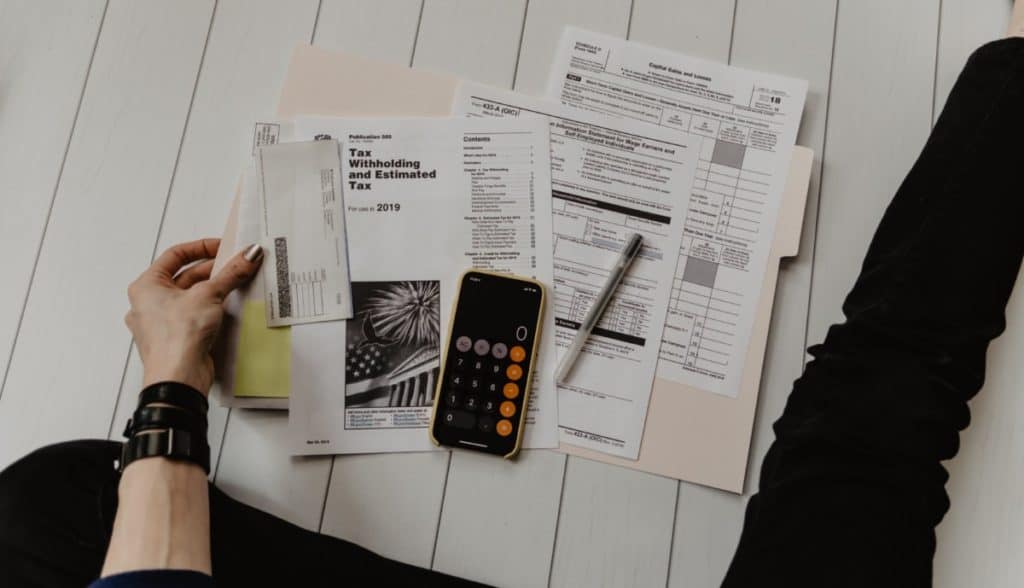Math has many applications in our lives. Learning certain types of math can prepare us for a better placement in college or could help us get considered for a new promotion, and some people like to learn math for fun. With all the different areas of math available, it is easy to find one that will benefit you.
It is possible to learn math without a teacher. There are many great topics in math to learn: Algebra, Geometry, Calculus, and more. Learning math without a teacher is a challenge, but the right resources, both textbooks and online, can make learning any math topic easier.
This article will take some time to explore some of the methods you need to learn math on your own without a teacher. We will explore what areas of math you can learn, what resources are the best both online and offline, the steps to make learning easier, and some of the most common problems you may encounter and how to overcome them.
Decide What Area of Math You Want to Learn

You first need to decide which areas of math you would like to learn. You have to start somewhere, and math is too general to not have a plan. There are many different areas of math, and some build up on the others. For example, to work on calculus, it is good to have a solid foundation of algebra I, algebra II, and precalculus as a minimum. Some of the most common areas of math you may want to explore include:
- Algebra: Algebra is all about finding what is unknown, or putting real-life variables we encounter into various equations before solving them. It will substitute letters for numbers while working on algebraic equations to represent scales. It may include vectors, matrices, real numbers, and complex numbers.
- Geometry: This is a branch of math that will study the shape, size, and position of 2D and 3D figures.
- Trigonometry: This is a branch that often works together with Geometry to help learn more about shapes. It helps us to find distances and angles and is found in engineering, science, and video games.
- Linear Algebra: This is a branch of math that will study linear sets of equations along with some of their transformation properties.
- Calculus: Calculus is a branch of math that will help us explore variables along with how they will change. This is done by looking at them in small pieces that mathematicians will call infinitesimals.
- Number Theory: We can also work with number theory. This is known as higher arithmetic and will take a look at some of the properties of integers, or the natural numbers we use each day. This form is part experimental and part theoretical because they want to discover more about the interactions between numbers, especially those that are unexpected.
- Differential Equations: This is an equation that will relate together one or more functions to their derivatives. The functions will often show physical quantities that we can touch and use, but the derivatives will show the rate of change in those physical quantities. That is why the differential equation will show the relationship that happens between these two parts.
Start with just one area of study. As you progress through that topic, you can decide what direction you want to take from there. Starting with one topic helps to narrow your scope and makes it easier to learn as you won’t need to handle too much at once.
Determine Your Motivational Factors
Learning math is hard. Unlike history, where you can find a specific area and learn the story of a culture or country, or English where you can write from your heart, math takes a bit more discipline to learn. This is even more true when you try to learn on your own.
It is important to keep motivated to get through. You won’t have a teacher to encourage you or work through the hard stuff with you. And there will be topics and areas where you struggle. Motivation is what will help you get through all of this.
Before you begin, decide why you want to teach yourself this area of math in the first place. If you wish to learn something new, finish classes at school early, or get in line for that next promotion, knowing your own motivation will make this easier.
Find the Right Resources
Finding the right resources is key to helping you succeed when working on your own math learning. Some options to consider when picking the right resources include:
The Library
The library is a great place to start to find all the resources you need. They have many workbooks and sometimes even textbooks that you can borrow for free. They also provide some learning resources online for free that you can use. Depending on where you live, some libraries may offer free courses or groups that you may utilize to get the most out of your learning.
Your local library is the first place you should check out. This will allow you to get some resources, search around to see what materials are available, and at least get a start on your learning.
Choosing Some Textbooks
Sometimes the best way to learn a new mathematical topic is to get back to the basics and use a few textbooks. These are designed to help students learn in a classroom, and have step-by-step instructions for each new topic, descriptions, and plenty of practice problems with answers. The best textbook to use will depend on the type of math that you want to learn, but some good options to choose include:
- Algebra 1 Workbook for Dummies
- Algebra II for Dummies
- Calculus I with Precalculus
- Calculus: Early Transcendentals
- Introduction to Statistical Inference
- Linear Algebra
Amazon is a great resource to find a variety of textbooks and workbooks based on the math topic you want to learn. Used bookstores and your library can provide some inexpensive options as well. If you know someone else who has taken time to learn math in a subject you have interest in, then see if they still have some of their textbooks.
Find the Right Online Resources
Online sources can be a great way for you to learn more about a specific area of math. They may offer more practice examples, along with instructions on how to do the work. If you learn better visually, then these online courses are a good place to start. Some of the online resources you can consider include:
- Coursera: This resource provides many full math classes to help you learn.
- MIT OCW: This is a good option for math at the university level, progressing up to some complicated topics if you choose.
- KhanAcademy: This is a free resource that includes helpful videos of almost any topic in math that you can think of.
- 3Blue1Brown: This is a YouTube channel that takes a closer look at different mathematical concepts.
Consider a College Syllabus
You don’t have to go to college to get a syllabus. You can find many of these online, or simply ask someone in the local math department if you can take a look at an example syllabus for the type of math you want to learn.
This is like a roadmap for what you should learn in that area. This syllabus is designed by a professor and used successfully for at least a few semesters at the college level. And you can use it as a simple roadmap to help you self-study and stay on the right track.
There are so many online and in-person-to-use resources, and it is easy to get off track or spend time on areas that aren’t relevant to what you want to learn. A syllabus will help you get started with a good idea of where you plan to go along the way.
Simple Steps to Start Learning Math on Your Own

Some of the simple steps you can use to start learning math on your own without a teacher include:
Look at the Explanation
The first step for learning math is to look at the explanation for the given topic. Any good course online and textbook will split each topic up into manageable chunks to make it easier. The topics will also build upon one another, so going in order is often critical to understanding some of the big topics later on.
Read through these explanations in any resource you are given. If you start by looking at the problems first, you will instantly get confused and have no idea what you are doing. If you look at the explanation first, you will understand the steps required and then move on to some of the practice problems later.
If the explanation you are provided isn’t very helpful, you need to do more research. Each person learns math differently, so an explanation that may make sense to someone else may not make sense to you.
This is the beauty of learning on your own. It is easy to look up other explanations from a variety of resources to find the answers that make the most sense to you. Don’t limit yourself to the one resource you plan to use the most. Explore and look around until you find the right explanation that helps these problems make sense to you.
Do Some Practice Problems
You can spend all day looking at explanations in a textbook and watch videos online. But math isn’t something you can memorize just from watching and reading. It is something you need to actually do.
Watching videos is a great way to get through a few topics that you struggle with. And it is a great way to learn something new. But it won’t help you to ever apply your knowledge and can make you feel like you aren’t good at math.
A good solution to this is to start working on math problems in your chosen topic as early as possible. To know you are working in the right area, the problems you practice should feel a bit challenging and should make you think, but they shouldn’t feel impossible.
Your textbook and workbook should provide many practice problems for you to work through. Take some time to work through all of these, even if you must split them up between different days. If you take an online class, use the practice problems they provide too.
The more practice problems you work through, the better. This helps you to get used to the processes necessary to solve the problems, and will make it easier for you to start understanding why the math works in the process.
Look Online for More Practice
While you may start with some practice problems in a textbook and your chosen workbooks, you should expand your practice out as much as possible. There are many choices online, including the resources we stated earlier in this article, that will provide practice problems to help you cement your understanding.
Learn How Math Works
It is all fine and good to spend time doing different math problems in the textbook and online, but you need to take this a little further. Even when you can solve the problems well, this doesn’t mean you have a complete grasp of what is happening.
It is easy for us to get used to a specific process, and we will do it automatically without thinking or understanding. It may get us the right answer, but it doesn’t mean we fully understand what we are doing. Without this understanding, you won’t truly learn the particular math you want to use.
Memorizing math is a dangerous thing to do without proper understanding. While you may be able to memorize stories and vocabulary words for a foreign language, this is not something you should do with math.
You must know how and why the math works. And the best way to do this is with the Feynman Technique. A lot goes into this technique, but to keep it simple, the five steps you need to use include:
- Clarify what you want to learn. The more concise this is, the easier it is to follow through.
- Self-assess your current understanding: You may start out with no knowledge of the topic, and sometimes you may know a few things. Self-assessing yourself will help you know where to begin.
- Gather all new information: To learn math, get the textbooks out, and work on the online courses to help you learn all the new knowledge you can on the topic.
- Clarify your new knowledge: As you start to gain new knowledge, reflect on it, and see how well you understand it. When your understanding changes, then the demonstrations of this should change. The use of concept maps, visuals, other analogies, and even summarizing how the math works can help.
- Restate the understanding: After you have learned something new, the goal is to state the understanding again and do the math, without checking your notes or paper.
A good way to implement this technique inside your math learning is to spend a bit of time identifying the core concepts. Then you can bring in the Feynman Technique to help convince yourself that you fully understand the topics.
Play Around and Get Familiar with the Math
Taking the time to practice, as we discussed above, is great. This is what you did during school exactly and helps you to get some of the basics of the math topic down. Spend as much time as you need on each topic playing around and learning math.
Once you have done all of the practice questions in the textbook, and maybe a few more online and with your other resources for good measure, it is time to have a little fun and see what you can do with the new math you have learned.
You can take some of the topics that you learned about before and change the numbers to see what happens. You can try to invent some of your own practice problems and mess around with those a bit, also.
There are a lot of ways that we can play around with math. You can look online to find this as well. The more you can play around with the math, the more it will stick.
Let’s say that you did a math topic that helped you learn more about compounding interest. With some practice and the help of your textbook, you are able to do a few interest calculations pretty well, and you feel like your understanding of how this work is getting stronger.
Now it is time to take this to the next level. How can we play with this math?
- First, take some time to see what happens when the rate of compounding starts to increase?
- Would something happen if you had a negative interest rate?
- Take your own savings and see what would happen to the results if you decided to invest them at different rates and for different amounts of time.
- Look to see how much of your mortgage you pay in interest, and how much you pay in principle.
Apply the Math in Everyday Life

One of the fastest ways to learn math is to use it. While it is a great start to learn how to do the practice problems and mess around with the numbers a bit, the best way to get the topics down and really understand them is to apply the math to your daily life.
The goal of learning math is to use it, rather than just trying to pass a test. To do this, though, it is important taking your knowledge of this topic and breaking away from the textbook. When you apply the math topic to the real world, it sticks better, and you will remember and understand the topics better.
Applying the math topic is a lot harder than just looking at a few textbook problems or online and solving for them. When you solve a problem in a textbook, you get better at finding and memorizing that solution pattern. This will often make it easier to solve those problems, but you may not understand some of the important principles that make the math work.
When we take the knowledge away from the textbook and start using it in real applications, we learn how to recognize a situation and translate it into a math problem. Then we can solve the problem that we were able to create. The textbook does all the work of creating a problem for us. With real-world applications, we have to do the work.
It is harder, but it is more effective in helping us see some good results. It is easier to gain a good understanding of the material. Make it your goal to find real-world applications of any math topic you are working on before moving to the next section.
Common Problems You May Encounter
Any time we try to learn something new, there is the potential for some problems to arise. These can be discouraging and hard to work with. Understanding some of the common problems, and having easy steps to follow is the best way to handle this. Some common questions and problems that may arise when you try to learn math on your own include:
What If I Find I Don’t Understand the Explanation?
You have spent a lot of time looking at the topic, watching videos, and reading explanations of how you should solve the problem. Even after this, you still have trouble understanding the explanation. There are two possible issues at play here.
First, and most likely, you don’t have the right prerequisites to understand this new area of math. You may need to back up a bit and go through previous lesions more. You may need to learn the past lessons better if this current explanation feels like it is going too fast.
If you get this feeling with the first lesson on the topic, it may be good to try out an earlier type of math. For example, if the first lesson of calculus is too hard, go back and review some algebra 2.
Another issue is that you may be trying to cover too much material without doing some practice problems. Get into the habit of listening to a small bit of the explanation, and then try it yourself. If you only spend your time watching the explanation, without any practice, you will never really get how to do that kind of math. Spend more time practicing then watching to get the best results.
I Don’t Have Any Practice Problems to Solve
This is not an excuse. It is time to get out there and start looking for problems to practice. There are a few things you can try.
- Work through any problems done in the explanation you have.
- Create some of your own problems and see if you can solve them.
- Look online for some practice problems.
- Invest in a math workbook on the topic and do those practice problems a few times.
I Can’t Find Resources to Use
Depending on the exact area of math you want to learn in, finding the right resources can be tough. You may need to explore looking through the library or asking a local university or even high school if they have some resources you can use. There is information out there on almost any math topic you want to study; some topics are simply a bit harder to find resources on than others.
The Math Is Too Easy and Boring
When you find yourself getting bored with the material, or you can get through it in no time at all, this is a sign that you need to progress more. You may have mastered that topic, and all you need is the confidence to move on to something more difficult. Challenge yourself and see if the motivation and fun come back into the game when you try something a bit harder.
I Can’t Get the Hang of This Math
If you have used the other suggestions in this section, and you took your time learning how to work through the problems, but it just won’t stick, it may be time for help. Even if you find a teacher or a friend who is good at math who can help walk you through it, explaining what is going wrong, this can be a big help. It may get you out of the rut you are stuck in so you can move on to other topics.
Conclusion
It is possible to learn math on your own without a teacher. You will need to have the right motivation and resources to make this easier. And you need to have a good plan as well. When all of this comes together, and you work through at your pace, practicing the problems, and understanding how the math works, you can learn your chosen math topic in no time.
Sources
- WikiHow: How to Learn Any Subject Without Teachers
- Coursera: Your Course to Success
- YouTube: 3Blue1Brown
- MIT Open Courseware: Find Courses
- Khan Academy: For Every Student, Every Classroom
- Stanford Undergrad: What is a Syllabus?
- Leananki: Learn Math on Your Own
- Scott H. Young: How to Teach Yourself Math
- Amazon: Algebra 1 Workbook for Dummies
- Amazon: Introduction to Statistical Inference
- Amazon: Calculus: Early Transcendentals
- Amazon: Linear Algebra
- Amazon: Algebra II For Dummies
- Amazon: Calculus I with Precalculus
- Less Wrong: The Best Textbooks on Every Subject
- ContentWise Step: How to Learn Math Fast and Easy
- Different Types: 26 Different Types of Mathematics
- Mathpresso: How to Teach Math
- Teach Thought: How to Use the Feynman Technique
- Wikipedia: Differential Equation
- How Stuff Works: What is Number Theory?
- Live Science: What is Calculus?
- Math World: Linear Algebra
- ThoughtCo: Algebra: Using Mathematical Symbols
- ThoughtCo: What is Geometry?
- Math’s Fun: Introduction to Trigonometry






